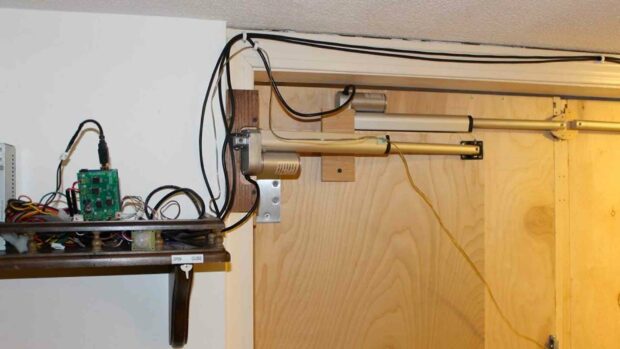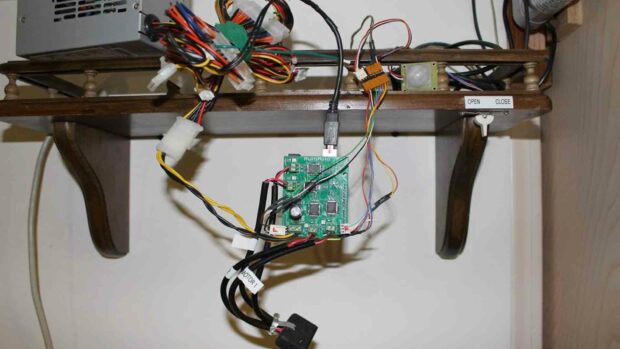Table of Contents[Hide][Show]
We’ve all seen hidden weapons lockers and secret bookcase entrances in the movies. Someone will push a button and then a secret door magically opens. One of my favorite secret doors is from the 1960s Batman TV show. Every episode Adam West would say “To the Batpoles” and press the concealed button inside a Shakespeare statue. Then the bookcase would open revealing the secret entrance to the Batcave.
How Do Actuators Work?
In case you’ve never heard of them before, an actuator is a mechanism that initiates movement. Actuators work by transferring energy into motion. They can be triggered in a variety of ways ranging from a light switch to a motion sensor. We are surrounded by linear actuators in our everyday lives. Almost all devices that involve motion are integrated with a linear actuator. For example, our cars’ cruise control, the brakes and the driver’s seat adjustment mechanism are all controlled by actuators.
Building A Secret Bookcase Door
Do you have a closet or room that you want to conceal with a moveable bookcase? Maybe hide your office, valuables or guns from an intruder or guests? Maybe this DIY secret bookcase door project will inspire you.
Bruce McArdle designed and built the secret bookcase doors featured below using linear actuators. Bruce’s bookcase is noteworthy because it’s real. He didn’t want a fake bookcase with hollow books and other lightweight objects. His bookcase doors are real wooden bookcases full of really heavy books.

To handle the weight of a full bookcase, Bruce used four Progressive Automation PA-14 linear actuators per door carefully triggered to work together. Two on top. Two on the bottom. To accomplish this, he used the Arduino open-source electronics prototyping platform to control them. The PA-14 can supply both adequate force and speed to move the bookcase.

Bruce added another special feature to his bookcase doors. He made them automatic. He never has to worry about closing the bookcase door. A motion sensor automatically closes the bookcase doors after 2 hours of inactivity.
For the inputs, motor control, and outputs, Bruce employed the services of only a single Arduino Uno. The power source for the four linear actuator motors was a RobotPower Multimoto high power quad motor shield.
Project Requirements
The Arduino Uno control board and PA-14 actuators were selected based on the following functional design requirements:
- A reliable automatic mechanism to open and close both doors.
- Hidden switch on the outside of the bookcase.
- Manual switches to open and close the doors inside the secret room.
- Automatically close bookcase doors after 2 hours of inactivity.
- Motor with low electric power consumption when in standby mode.
- Emergency exit feature in case of power or system failure.
- Safety release to prevent a person or object being caught in the closing doors.
The Bookcase In Action
Ready to build your own version of this project? Bruce created a detailed instructable describing how he built his secret bookcase doors. There are also plenty of reference videos and a downloadable guide. And don’t forget to get a Shakespeare head with a secret switch. Good luck!
Related Articles:
- Boff Bonk Pow! The Story Behind Batman’s Fight Graphics
- 5 Compelling Reasons To Turn Your House Into A Smart Home
- How To Batman Teaches You How To Properly Order From Subway Restaurant
- How Micro Linear Actuators Are Advancing Home Automation Technology

Frank Wilson is a retired teacher with over 30 years of combined experience in the education, small business technology, and real estate business. He now blogs as a hobby and spends most days tinkering with old computers. Wilson is passionate about tech, enjoys fishing, and loves drinking beer.












 Doctors Remove A LIVE Cockroach from Woman’s Skull
Doctors Remove A LIVE Cockroach from Woman’s Skull
Leave a Reply
You must be logged in to post a comment.